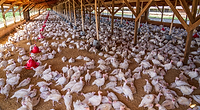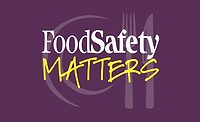FAO/WHO Experts Recommend Multi-Hurdle Approach to Controlling Campylobacter on Chicken

Image credit: raja j via Pexels
The Food and Agriculture Organization of the United Nations (FAO)/World Health Organization (WHO) Joint Expert Meetings on Microbiological Risk Assessment (JEMRA) convened in Rome, Italy from February 6–10, 2023 to review the most recent scientific literature regarding the control of thermotolerant Campylobacter species C. jejuni and C. coli in broiler production and in chicken meat. A summary of the meeting’s findings were recently published. In general, JEMRA recommended a multi-hurdle approach suitable to the production and processing stages to lower Campylobacter contamination of chicken meat.
The meeting was held in response to a request from the 52nd Session of the Codex Committee on Food Hygiene (CCFH) to inform possible revisions to Codex Alimentarius Guidelines for the Control of Campylobacter and Salmonella in Chicken Meat (CXG 78-2011). To address the same request, another meeting was convened regarding the control of Salmonella, for which a summary was published in January 2024. The scope of the more recent meeting on Campylobacter was focused on aspects of broiler primary production, from the point of chick placement, into production establishments, to consumer handling. JEMRA reviewed the available data on Campylobacter control, including scientific literature published from 2008–October 2022 and data submitted in response to a call for data for the meeting.
Control measure evaluation began at the time of chick placement, as there currently does not exist any evidence that parent flocks or hatchery practices contribute to the colonization of broiler chicks. The available literature on interventions was predominantly based on laboratory and pilot studies, with few commercial scale applications, which limited the conclusions that could be drawn. Available evidence for the reduction of Campylobacter was primarily focused on C. jejuni and C. coli.
Although there are no interventions designed specifically for the control of Campylobacter on meat, interventions aimed at foodborne pathogens like irradiation or thorough cooking are effective in eliminating the pathogen on meat. JEMRA also recommends hazard-based interventions, good agricultural practices (GAPs), and good hygienic practices (GHPs).
In a less general sense, several interventions were identified in primary production through post-processing. For example, at primary production, strict biosecurity measures (hygiene and sanitation) can help control Campylobacter in broiler flocks. Risk factors that can help guide biosecurity measures and interventions include partial depopulation, litter management, down period length, proximity to other livestock, and slaughter age. Also relevant to primary production is vaccination. At present, there are no commercial vaccines for Campylobacter in any stage of primary production, although some vaccine candidates are in the proof-of-concept stage. Additionally, some feed additives have shown promise in reducing Campylobacter in caecal/faecal specimens at the end of the primary production, especially short- and medium-chain fatty acids like caprylic acid.
During processing, the efficacy of interventions is dependent upon incoming flock prevalence and concentration of Campylobacter in the gastrointestinal tract and on the bird, although GHPs are always crucial. The impact of processing practices can be enhanced by a combination of a multi-hurdle approach, processing effects, physical, and/or chemical interventions. For example, processing effects that can reduce Campylobacter presence and cross-contamination include logistic slaughter scheduling, the use of qualitative and quantitative targets to optimize process control, carcass scalding with appropriate temperature and dilution effect, immersion chilling, and air chilling. On the other hand, defeathering and evisceration may increase both the prevalence and concentration of Campylobacter on carcasses.
Effective physical interventions during processing identified by JEMRA include irradiation and freezing. Steam, ultrasonication, high-intensity light pulse, visible light, ultraviolet-C (UV-C) light, and other technologies have shown promise either at the laboratory or pilot scale, but their impact is unknown at commercial scale. Regarding chemical interventions, processing aids like chlorine derivatives, peroxyacetic acids, and organic acids added to water used for washing and/or dipping may reduce Campylobacter on carcasses. Some margination ingredients have also demonstrated the ability to reduce the presence of the pathogen on meat.
Finally, the expert committee evaluated post-processing interventions for the control of Campylobacter on chicken meat. Thorough cooking, GHPs, freezing meat, and the use of certain margination ingredients were underlined as effective strategies for eliminating or reducing the pathogen.
JEMRA recognizes that data gaps still exist, and that new technologies may offer promising approaches to reducing Campylobacter on chicken meat in the future. Further changes to industry, the growth of global populations, climate change, and increased demand for animal protein in specific regions will guide the need for further control measure assessments.
Looking for a reprint of this article?
From high-res PDFs to custom plaques, order your copy today!






